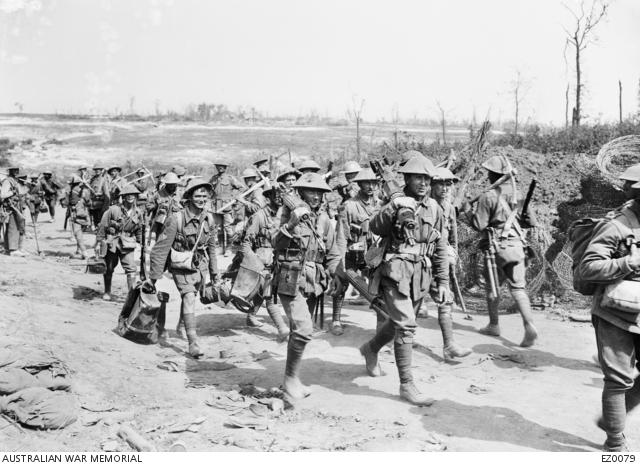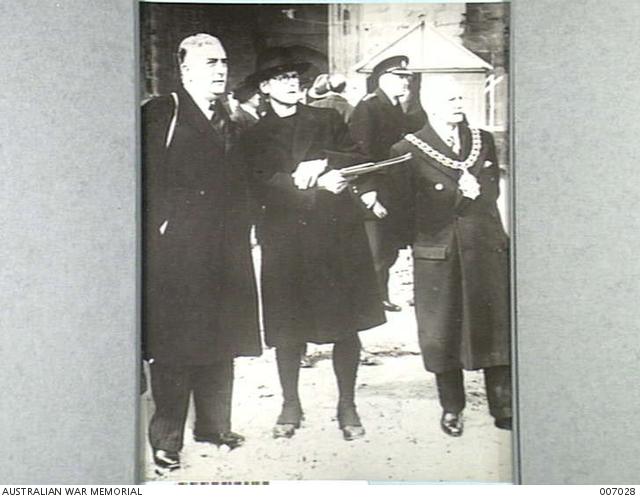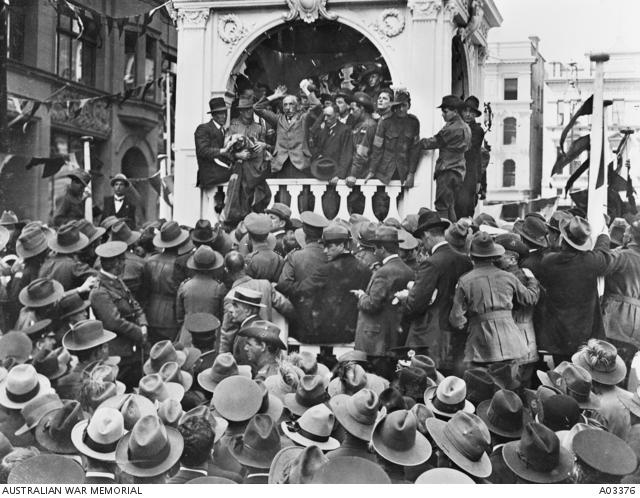The Carnage of the Somme
Like most Australian soldiers who fought in the First World War, Private James Makin did not fight on Gallipoli. The 22-year-old bank clerk from Middle Park in Melbourne had enlisted in the Australian Imperial Force (AIF) in July 1915 and left Australia with a reinforcement group for the 21st Battalion two months after the last troops were evacuated from Anzac. Makin’s war began in Egypt, where for months he tramped on pack marches and rehearsed mock attacks in the hot desert sands before sailing for France.
After a year of training, Makin was both nervous and excited to enter the trenches of the Western Front. “The long-looked-forward-to-day has arrived”, he wrote from his billet near Armentières in June 1916. “The prospect of a term in the ‘first line’ trenches fills me with all sorts of anticipations. What will the actual trenches be like? What is the feeling of one ‘under fire’ for the first time? Are we to occupy a ‘hot’ part of the line, or a place of comparative quiet?”
Naïve and inexperienced, Private Makin nevertheless knew that the outcome of the Great War was going to be decided on the battlefields of the Western Front. One hundred years on, it is worth modern Australians pondering why our troops were fighting in France, and why the fighting there still matters. Gallipoli remains firmly entrenched in the national psyche as a defining moment in the nation’s history, but it was ultimately a costly and unsuccessful sideshow to the beginning of three more years of bitter fighting. The centenary of the fighting of 1916 reminds us that the Western Front, not Gallipoli, was where Australia made its greatest contribution to the First World War. It is also where it made its greatest sacrifice. In just eight weeks in France Australia lost more men killed, missing, wounded, and captured than it did in eight months on Gallipoli.
Australian soldiers arrived in France in 1916 and entered a vast network of trenches that extended 700 kilometres from the Belgian coast to the Swiss border. Opposite them were troops of the German army, formidable adversaries who had every inch of no man’s land covered with artillery and interlocking cones of machine-gun fire to protect what they saw as their empire’s new western border. Since the German invasion of Belgium in August 1914 was what drew the British Empire into the war in the first place, Australian troops like Private Makin were excited by the prospect of fighting w the principle aggressor of the war. Not only would ejecting the Germans from France preserve a democratic republic defined by its traditions of liberty and equality but it would also remove a hostile, totalitarian army from Flanders, where the gunfire could be heard 250 kilometres away in central London.
In July 1916 the AIF joined British, Canadian, New Zealand, South African, Indian, Newfoundland, and French troops in a major campaign amid the rolling hills of the Somme region in Picardie. Beginning on 1 July, the purpose of the offensive was to draw the Germans into a separate offensive to relieve the French at Verdun, while trying to achieve a breakthrough to end the deadlock. With the onset of winter four months later the British and French had suffered 485,000 casualties, yet the line had advanced just 12 kilometres and was nowhere near its intended objective. The Australians had fought costly actions at Fromelles, Pozières, and Mouquet Farm as part of this offensive, sustaining 28,000 casualties (including 6,700 dead) before they were relieved by the Canadians in early September.
The story of the Gallipoli landings and the subsequent defence of a hostile shore are well known, yet more Australian troops fought on the Western Front than in any other theatre of operations. There were also more casualties. Of the more than 60,000 Australians who died during the conflict, some 45,000 lost their lives on the Western Front. Of these, 17,000 have no known grave, and today their names are etched in the white Portland stone of the Australian National Memorial at Villers-Bretonneux in France, and on the Menin Gate Memorial at Ieper (Ypres, as it was known during the war) in Belgium.
In addition to the dead were 134,000 wounded and countless others who suffered psychological damage even in the decades following the Armistice. Six weeks after entering the line at Armentières, James Makin was pulled from a dug-out at Mouquet Farm following a direct hit from a German high-explosive shell. Evacuated to England with “shell shock”, he never returned to France. His older brother, Les, is still there today. Mortally wounded in 1918, he was buried near Rouen, where a small epitaph penned by his grieving parents appears on his headstone: “Oh Sacred Heart of Jesus Have Mercy on His Soul”.
It is difficult to imagine how Australians coped with the staggering losses of 1916. Today the loss of an Australian soldier in combat makes national news, but at Fromelles the AIF lost 1900 dead in one night. As well as devastating many communities throughout the country, these losses created a crisis in recruiting for Australia’s all-volunteer army. Facing ever-diminishing reinforcement quotas for France and the ongoing fight against the Ottomans in Sinai and Palestine, the Labor government under Billy Hughes called for a plebiscite to gauge public support on the introduction of conscription for overseas service.
Support for the war remained virtually unanimous, but the issue of sending men to fight against their will deeply divided the country along political, social, and sectarian lines. It was narrowly rejected at the polls by a small margin in October 1916, but the prospect of compulsion loomed large until conscription was rejected at a second referendum the following year. In spite of mounting casualties and simmering tensions at home, the AIF (along with India and South Africa) remained an all-volunteer force for the rest of the war.
Australia’s losses in the Great War were both costly and tragic, but it cannot be said they were in vain. While it is important to remember the sacrifices made by ordinary Australians in France and at home in 1916, it is also worth remembering that the war was not won by men and women sitting on the sidelines. Constant training and three years of hard fighting in France and Belgium allowed the AIF to develop into an effective fighting force that played a prominent role in Germany’s defeat. For Australia, as with the rest of the British Empire, the carnage of the Somme and the battles of 1916 began the long and bloody road to victory in 1918.


